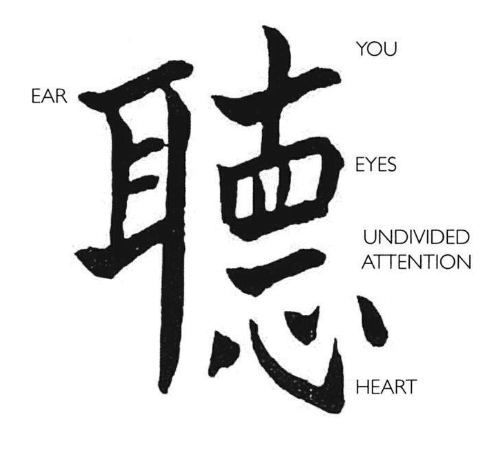Minimizing Miscommunication to Maximize Performance

We spend around 70% of our working days communicating with other people, and as many as 80% of the challenges in the workplace can be linked to misunderstandings. Improving our communication has a direct, positive impact on our performance and relationships.
At the most basic level, communication involves a sender, a receiver, a message, and a channel.

The thing is, humans are anything but basic. We send a message through our filters and preconceptions, our family history, education, emotions, interests, and energy invested in the subject. It’s the same for the receiver; they have their own filters and preconceptions, culture, mental list of pending to-do tasks, family issues, topics they’re following, and emotions of the moment. See where I’m going with this?
Human communication is subjective and ever-changing. The message is not only the message; we communicate with our words, voice, and body language.
Body Language
The 7-38-55 rule (developed by Dr. Albert Mehrabian, a psychology professor from the University of California) states that 7% of our communication comes from our actual spoken words, 38% comes from our voice–including tone, pitch, speed, and pauses and 55% comes from our body language, including posture, position, proximity, gestures, and movements.
In a communication interaction, we are as the other person perceives us. Our message is going to be decoded and received depending on multiple moving factors. Communication is neither simple nor straightforward. If we want to get our message across, we have to put in the effort to communicate it in a way that the receiver will decode it as close as possible to our objective.
How many times have you heard someone say, “I have repeated this a thousand times,” or “In what language do they want me to say it?” “I just told you, plain and simple,” “That’s not what I meant,” or “Why are you not getting it?”
It boils down to how well you know yourself and your own triggers, filters, and reactions. How well can you recognize and control them to better communicate your message in a way the other person will receive it?
Communication Styles
A variety of theories and tools approach communication styles from different angles.
People tend to be visual, auditory, or kinesthetic. Expressions like “I see what you are saying” are an indicator of a visual person; “I hear you” suggests an auditory one, and “I was so mad I was hot” might come from a kinesthetic individual.
It can also be seen from the perspective of passive, aggressive, passive-aggressive, and assertive. Passive people are indirect, expect others to know their needs, and avoid expressing what they really think; they tend to say things like, “I don’t want to be mean, but.” The interaction is I lose/you win.
Aggressive people are direct, demanding, and insensitive to people’s feelings. They say things like, “You don’t know what you are doing; do what I am telling you.” The interaction is I win/you lose.
Sarcasm, gossip, and rumors are examples of passive-aggressive communication. It is an I lose/you lose communication.
An assertive style is direct and values others; they seek compromise and are respectful. It is an I win/you win situation.
DISC personality profiles are another way to look at communication styles. People can be characterized in terms of dominance, influence, steadiness, and conscientiousness.
Dominant people are direct, want results, get things done, and tend to be authoritative. Influential people are enthusiastic, emotional, want relationships, are creative, and motivational. Steady people mediate and are supportive and collaborative; they keep the teams together. Conscientious people like to analyze and investigate and want data and accuracy; they maintain stability.
There are many more approaches. Like Myers Briggs Type Indicators (extroverted, introverted, sensing, intuitive, thinking, feeling, judging, and perceiving, in all their combinations). Or the 5 Voices from Kubicek and Cockram: pioneer, connector, guardian, creative, and nurturer.
We can even approach it from a transactional analysis perspective and think of communication in terms of parent, child, and adult. A parent communication can be critical (demanding, moralizing, correcting, and threatening) or nurturing (protective, sympathetic, supportive).
When we communicate from the child state, we can be adapted (manipulative, polite, blaming others) or natural/free (selfish, creative, without filters). When we are in our adult state, we are independent, problem solvers, and open-minded; we offer information and listen to others.
We each have our own predominant communication style; we are used to it, and it makes sense to us. We also tend to jump from one to another depending on the situation, environment, or group we’re in. Usually, we communicate differently with our supervisor than with our friends.
However, there are no guarantees the person we are communicating with has a style that is compatible with ours. It’s not enough to know ourselves and say, “This is how I am.” Being flexible and able to adapt to different people is the key to success.
Emotions
There are several overlapping layers when it comes to communication; besides the style, word choices, body language, and personal background, we have to factor in things like emotions, too.
It has been scientifically proven that emotions influence our cognitive capacity. They are, in fact, inversely proportional. The stronger the emotion, the lower our thinking capacity. The expression “I am so mad I can’t even think” is an absolute truth. Once the emotion overtakes us, there is no room for anything else.

How To Be A Successful Communicator
To be a good communicator, we must be flexible and modify our style, adapting to each situation and stepping out of our comfort zone to meet the other person where they are. We have to train ourselves to talk to people in a way where they will hear us.
It seems counterintuitive. However, one of the most important elements to be a good communicator is active listening. Practice the 70/30 rule. Listen 70% of the time and talk 30%. Really listen, turn off the internal dialogue, and don’t think about what you are going to say next or worry about why the person is using this word or that they have a spot on their shirt.
Pay attention to what they are saying and how. The perfect way to illustrate this practice is with the Chinese character “Ting,” which is used to express the infinitive verb ‘to listen.’ We have to listen with our whole selves, including our ears, eyes, and hearts, and with undivided attention. Pause for a moment and think, when was the last time you listened like this to someone?

Knowing ourselves is key; being self-aware of our filters and emotions allows us to know where we come from and recognize our triggers. Having self-management is the capacity to dial back those filters and emotions in favor of the communication.
Our beliefs, emotions, and behaviors guide what we think about others and ourselves and shape our expectations. They shape our reality because beliefs drive emotions, and emotions create behaviors.
Recognizing our style and the fact that we are all different opens the door to enriching two-way communication. We might love data and details, or to talk very slowly, to tell stories, or to stand very close to people and use a loud voice. Successful communicators tune in to the needs of the other person and provide what they need; that is when the message gets across, and we get the results we want.
About the Author

Carolina holds an undergraduate degree in communication and a master’s degree in group dynamics. Her original background is in corporate communications, training, and development. In 2007, Carolina relocated from her home country of Venezuela to Houston. Today, she serves as the clinical director of Echeverri Dental Center.







